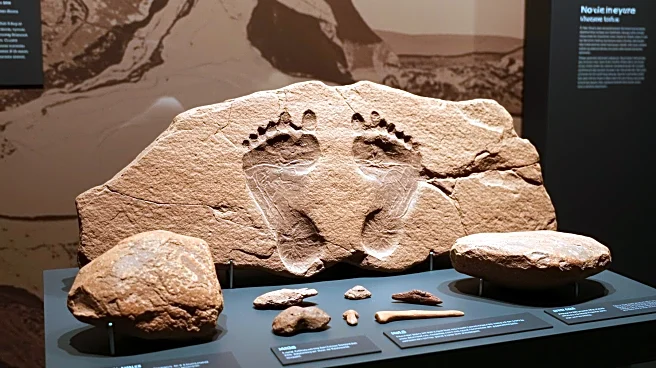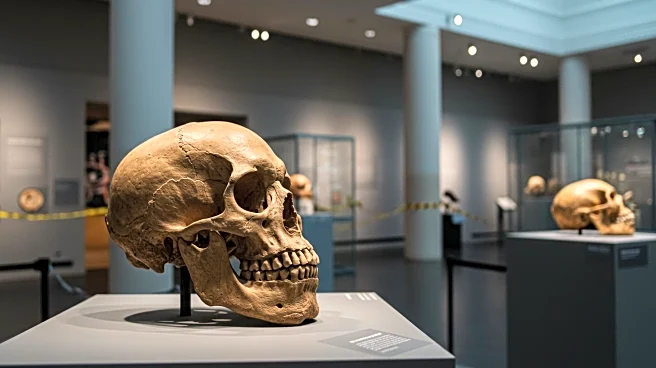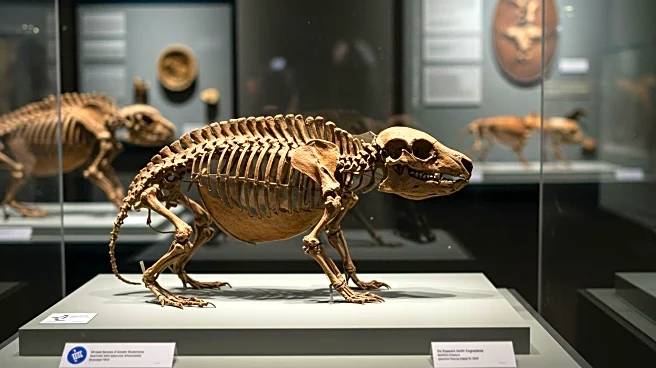What's Happening?
Recent advancements in stable isotope analysis have provided new insights into the dietary habits of ancient humans and Neanderthals. By examining carbon and nitrogen isotope ratios in bones and teeth, researchers can determine the types of plants and animals consumed by prehistoric individuals. This method has revealed that Neanderthals primarily ate large herbivores, while early modern humans displayed more dietary flexibility, including fish consumption. Innovations in isotope analysis, such as compound-specific isotope analysis and nitrogen extraction from tooth enamel, have expanded the timeline for studying dietary shifts in hominins, supporting theories about diet quality and brain evolution.
Why It's Important?
Understanding the dietary habits of ancient humans and Neanderthals is crucial for unraveling the evolutionary success of Homo species. The ability to adapt to diverse food sources may have given early humans an advantage over Neanderthals, contributing to their survival and spread across the globe. These findings also support the 'expensive tissue hypothesis,' which links high-quality diets to brain development. The research highlights the importance of dietary flexibility in human evolution and provides a deeper understanding of how ancient diets influenced physiological and cognitive development.
Beyond the Headlines
The study of ancient diets through stable isotope analysis not only informs our understanding of human evolution but also raises questions about the ethical implications of modern dietary choices. As researchers continue to explore the relationship between diet and evolution, there may be broader discussions about sustainable food practices and their impact on human health and development. Additionally, the techniques used in this research could be applied to other fields, such as forensic science and environmental studies, offering new ways to analyze biological and ecological data.








